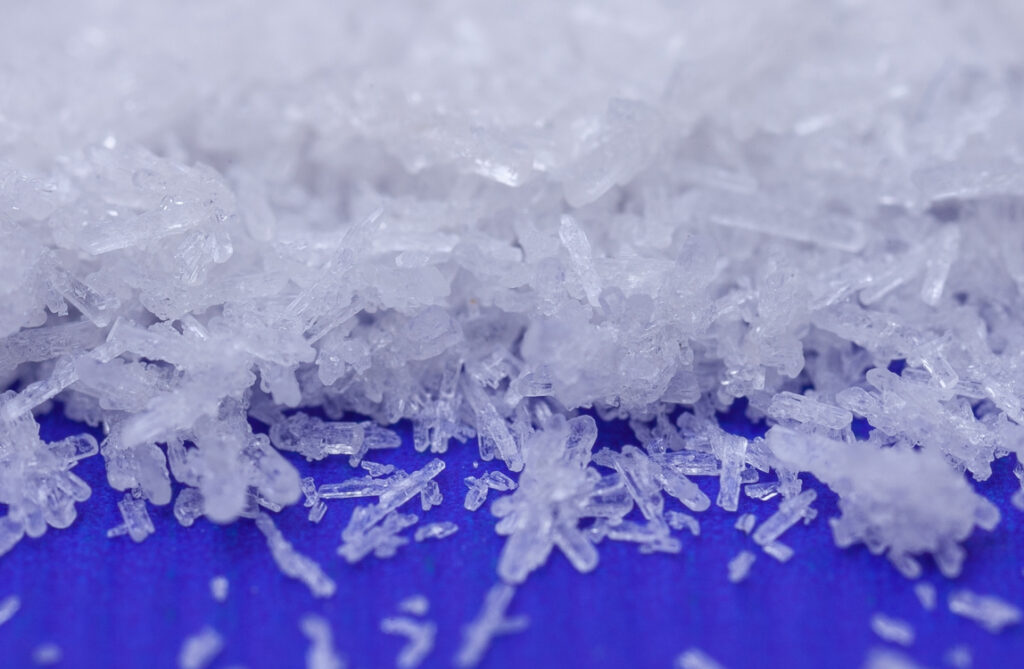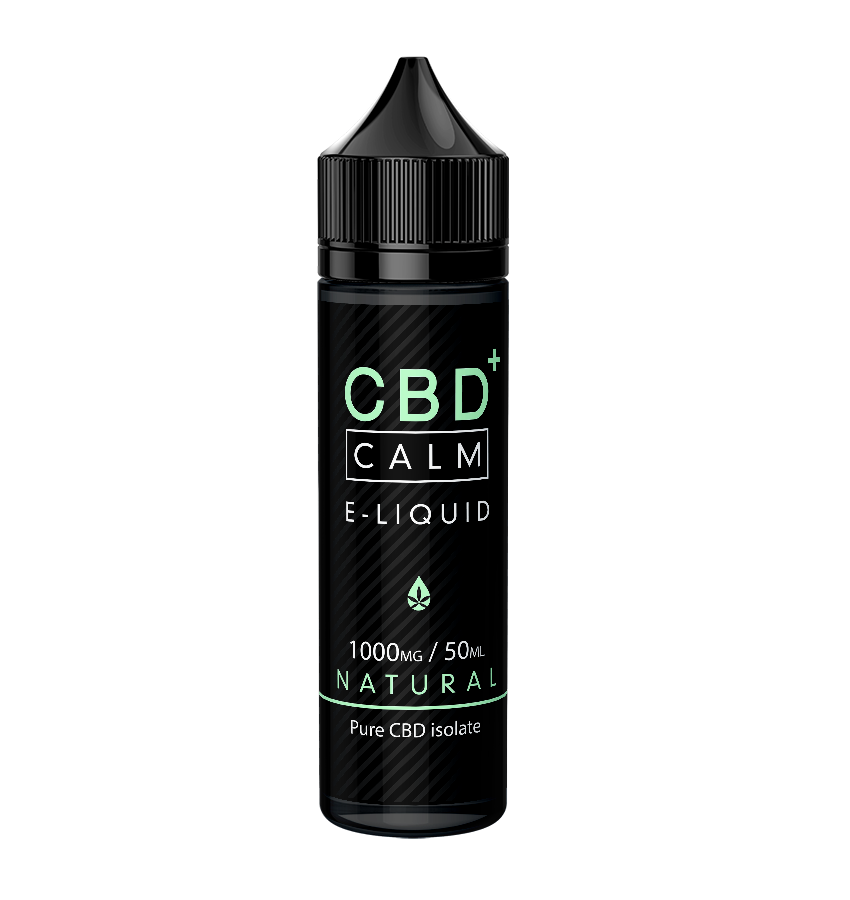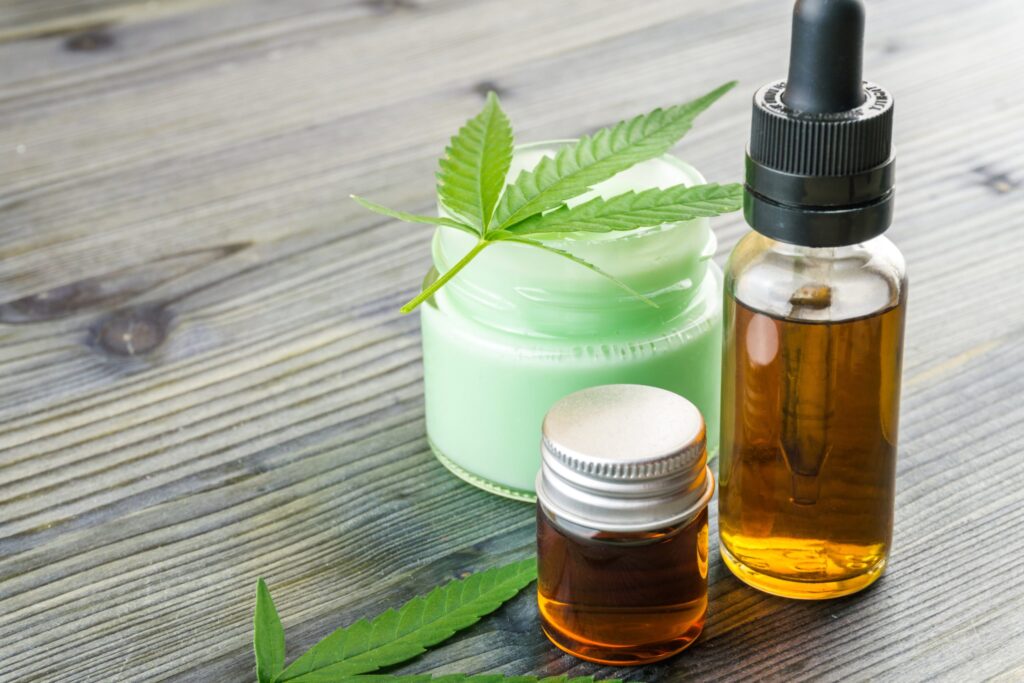Cannabidiol (CBD) CAS 13956-29-1 is one of the cannabinoids found in the Cannabis sativa plant. Cannabidiol is a phytocannabinoid discovered in 1940 and can make up to 40% of the plant extract. It has a wide range of potential therapeutic benefits and is non-psychoactive. Scientific interest in cannabidiol has increased dramatically over the past few decades, leading to extensive research aimed at uncovering its properties, reactions, and diverse applications.
Cannabidiol has become a significant player in the recreational market. Unlike tetrahydrocannabinol (THC), cannabidiol is non-psychoactive, making it attractive to people seeking relaxation.
ecreational use of cannabidiol is often associated with feelings of calm, reduced stress, improved sleep quality, improved mood, and an overall sense of well-being. Additionally, some people use cannabidiol to relieve minor pain.
The synthesis of cannabidiol, either by extraction from the cannabis plant or chemical synthesis, is a topic of interest due to the growing demand for pure, high-quality cannabidiol. This article will look at the main reactions involving cannabidiol and their implications for its use in medicine, cosmetics, and beyond.

Physical and Chemical Properties of Cannabidiol
Cannabidiol (CBD) CAS 13956-29-1 is a prominent non-psychoactive phytocannabinoid derived from the Cannabis sativa plant. Cannabidiol has a molecular formula of C21H30O2 and a molecular weight of 314.5 g/mol. It appears as a colorless crystalline solid at room temperature. Melting point of cannabidiol is 66°C and vapor pressure is 2 mmHg (at 190 °C). The compound is characterized by its low solubility in water, soluble in organic solvents such as ethanol, methanol, isopropanol, benzene, chloroform, and diethyl ether.
The structure of cannabidiol is defined by its bicyclic core and the presence of several functional groups, including a hydroxyl group of the aromatic ring. Cannabidiol is relatively stable but is susceptible to degradation when exposed to air, light, or heat. The compound’s stability is compromised through oxidation, which can lead to the formation of quinones, and other degradation products.
The pharmacological effects of cannabidiol are primarily mediated through its interaction with various molecular targets, including the endocannabinoid system. Although cannabidiol has a low affinity for cannabinoid receptors (CB1 and CB2), it indirectly influences these receptors by inhibiting the breakdown of anandamide. Additionally, cannabidiol interacts with non-cannabinoid receptors such as serotonin receptors (5-HT1A), transient receptor potential vanilloid (TRPV1) receptors, and gamma-aminobutyric acid (GABA) receptors, contributing to its anxiolytic, analgesic, and anti-inflammatory effects.
Synthesis of Cannabidiol
There are several methods for producing cannabidiol (CBD), CAS 13956-29-1 ranging from extraction from the Cannabis sativa plant to chemical synthesis. Extracting cannabidiol from the Cannabis sativa plant is an important step in producing high-quality cannabidiol products. Various extraction methods have been developed to isolate and purify cannabidiol, each with its own advantages and limitations.
Solvent Extraction
Solvent extraction is one of the oldest and simplest methods of extracting cannabidiol. The process involves using a solvent such as ethanol, butane or propane to dissolve the plant material and extract the cannabinoids.
Ethanol is often preferred because it is safe for human consumption and can extract a wide range of cannabinoids and terpenes. However, using solvents like butane and propane can be more effective, but requires careful handling due to their flammability and potential health risks. Using high-frequency sound waves to mix the plant material and solvent increases the efficiency of extraction.
The solvent extraction process typically involves the following steps:
- Soaking or Washing: The cannabis plant material is soaked or washed with a chosen solvent, which dissolves the cannabinoids and other soluble compounds. The plant material can be fresh or dried, depending on the desired extraction profile.
- Filtration: After soaking, the solution is filtered to separate the solid plant material from the liquid extract. This step removes plant fiber and other solid impurities from the solution.
- Evaporation: The solvent is evaporated from the liquid extract, leaving behind a concentrated cannabidiol extract. This step is critical to ensuring that the final product does not contain residual solvents that can be harmful if ingested or inhaled. The evaporation process can be accomplished using methods such as rotary evaporation or vacuum distillation, both of which help to effectively remove solvents at lower temperatures while maintaining the integrity of the cannabinoids.
- Purification: Depending on the desired product, the extract may undergo further purification steps such as freezing (this process involves dissolving the crude extract in ethanol and then cooling the solution to -20°C) to remove triglycerides and waxes.
Carbon Dioxide Extraction
Carbon dioxide extraction is considered the gold standard in the industry due to its efficiency and ability to produce highly pure extracts.
The process involves:
Extraction: Carbon dioxide is passed through plant material, dissolving the cannabinoids.
Separation: The mixture is passed through a separator, where the carbon dioxide returns to a gaseous state, leaving behind pure cannabidiol extract.
Carbon dioxide extraction allows for precise control of temperature and pressure, allowing for selective extraction of specific compounds.
Synthesis from Cannabidiolic Acid
In semi-synthetic synthesis from cannabidiolic acid (CBDA), the process typically begins with the extraction of cannabidiolic acid from the cannabis plant. The cannabidiolic acid is then decarboxylated, a process in which it is heated to remove the carboxyl group, resulting in the formation of cannabidiol. The decarboxylation reaction typically occurs at temperatures between 110°C – 145°C for 10 – 60 minutes and can be facilitated by controlled heating environments to ensure efficient conversion. Cannabidiolic acid can be partially decarboxylated in 2 hours in boiling benzene (80°C), but is completely converted to cannabidiol in 2 hours in boiling xylene (139°C). This method is advantageous due to the abundance of cannabidiolic acid in hemp-based cannabis strains, making it a practical and cost-effective source for large-scale cannabidiol production.

Each method of obtaining cannabidiol has its own set of advantages and limitations, and the choice of method often depends on factors such as cost, purity and regulatory requirements.

Chemical Reactions of Cannabidiol
Cannabidiol (CBD) CAS 13956-29-1 exhibits several chemical reactions due to its structural composition, particularly its hydroxyl groups and the presence of a non-aromatic double bond.
One of the main chemical reactions that cannabidiol undergoes is oxidation. The hydroxyl groups on the aromatic ring are particularly susceptible to oxidative conditions. For example, when cannabidiol is exposed to air and light, it can slowly oxidize, forming quinones and other oxidative byproducts. A controlled oxidation reaction of cannabidiol can be carried out using reagents such as chromium trioxide, resulting in the formation of cannabidiolquinone (CBDQ, HU-313).

Cannabidiol is also susceptible to addition reactions due to the presence of a non-aromatic double bond in its molecular structure. Hydrogenation of this double bond can be accomplished using hydrogen gas in the presence of a metal catalyst such as palladium on carbon. This reaction results in saturation of the double bond, resulting in tetrahydrocannabidiol.

Another addition reaction involves halogenation, where cannabidiol reacts with halogens such as bromine or chlorine, resulting in the formation of mono and dihalo-cannabidiol derivatives. For iodine substitution, halogenation is performed using N-iododibutyrimide.

Cannabidiol isomerization can lead to the formation of various cannabinoids, including the psychoactive cannabinoids. Cannabidiol isomerization typically involves the conversion of cannabidiol to 9-hydroxyhexahydrocannabinol (9α-OH-HHC). This process can be induced under acidic conditions with sulfuric acid, where the hydroxyl groups of cannabidiol undergo cyclization.


Applications of Cannabidiol
Cannabidiol (CBD) CAS 13956-29-1 has attracted a considerable attention for its diverse applications in medicine, cosmetics, and other fields.
Epilepsy Treatment
Cannabidiol is widely recognized for its effectiveness in treating certain forms of epilepsy. The FDA-approved drug Epidiolex, which contains purified cannabidiol, is used to treat seizures associated with Lennox-Gastaut syndrome, Dravet syndrome, and tuberous sclerosis complex.
Pain Management
Cannabidiol exhibits analgesic properties that make it useful for treating chronic pain. It is used to relieve pain in conditions such as fibromyalgia, arthritis, and neuropathic pain. The anti-inflammatory effects of cannabidiol contribute to its analgesic capabilities, making it a valuable alternative to traditional painkillers.
Anxiety and Mood Disorders
Studies show that cannabidiol has anxiolytic effects, which may help manage anxiety disorders. Additionally, its mood-modulating potential is being explored for the treatment of depression and other mood-related conditions.
Neuroprotection
Cannabidiol’s neuroprotective properties are being explored for the treatment of neurodegenerative diseases such as Alzheimer’s and Parkinson’s. Its antioxidant and anti-inflammatory effects may help protect neurons from damage, potentially slowing disease progression.
Skin Care
Cannabidiol has become a popular ingredient in skin care products due to its moisturizing, anti-inflammatory, and antioxidant properties. It is used in formulations to treat conditions such as acne, psoriasis, and atopic dermatitis. Cannabidiol can regulate sebum production, reduce inflammation, and promote wound healing, making it useful for a variety of skin conditions.
Hair Care
Cannabidiol is also used in hair care products for its potential to stimulate hair growth and support a healthy scalp. Its anti-inflammatory and moisturizing effects can help manage conditions like dandruff and seborrheic dermatitis, promoting healthier hair and scalp.
Dietary Supplements
Cannabidiol is available in a variety of dietary supplements, including oils, capsules, and gummies. These products are marketed for their potential to support overall well-being, improve sleep quality, and relieve stress.
Sports and Fitness
Athletes and fitness enthusiasts use cannabidiol for its potential to reduce muscle soreness and inflammation after intense workouts. Balms and lotions containing cannabidiol are applied topically to target specific areas, while oral supplements are taken to support overall recovery and performance.

Health Effects of Cannabidiol
The health effects of cannabidiol (CBD) CAS 13956-29-1 in laboratory settings are an important consideration for researchers. Although it is generally considered safe, it may have health effects.
Acute Effects
Cannabidiol is known for its low toxicity, and acute exposure to the compound does not typically result in serious health effects. However, lab workers may experience mild symptoms when exposed to high concentrations of cannabidiol or its vapor. Short-term inhalation of cannabidiol aerosols or dust may cause respiratory irritation characterized by coughing or throat discomfort. Direct contact with cannabidiol may result in mild skin or eye irritation.
Long-term Exposure and Sensitization
While acute exposure to cannabidiol is generally considered safe, the effects of long-term exposure in a lab setting are not as well documented. Long-term or repeated exposure to cannabidiol may potentially lead to sensitization, in which people develop allergic reactions over time. Symptoms of sensitization may include itching or respiratory problems similar to allergic rhinitis.

Safety Precautions
When working with cannabidiol (CBD) CAS 13956-29-1 safety precautions are important. Cannabidiol, although generally considered to be of low toxicity, requires careful handling and storage to prevent contamination, degradation, and unintentional exposure.
Personal Protective Equipment (PPE)
Use appropriate personal protective equipment. Researchers should wear lab coats, gloves, and goggles to protect against accidental spills, splashes, and contact with skin or eyes. Nitrile gloves are recommended as they provide resistance to the solvents often used in preparing and handling cannabidiol. In situations where cannabidiol is sprayed or there is a risk of inhalation, face masks or respirators are recommended to prevent respiratory exposure.
Handling and Storage
When working with cannabidiol, it is important to work in a well-ventilated area, preferably in a fume hood, to minimize inhalation of vapors or dust. When not in use, cannabidiol should be stored in tightly sealed containers made of materials compatible with organic compounds, such as dark glass bottles, to prevent exposure to air and light, which can cause degradation. The storage area should be cool and dry, ideally in a temperature-controlled environment, to maintain the stability of the cannabidiol over time.

Conclusion
Cannabidiol (CBD) CAS 13956-29-1 a phytocannabinoid, stands out as a promising compound with a wide range of therapeutic potential and recreational uses. Cannabidiol is an attractive candidate for medical applications and offers opportunities for innovation in product development in the pharmaceutical, cosmetic, and food industries. The diverse applications of cannabidiol, from the treatment of severe epilepsy to the management of anxiety and pain, highlight its impact on modern medicine. The future of cannabidiol research and application looks promising.

Bibliography
- Cannabidiol (CBD) Isomerization to Psychoactive Cannabinoids
https://bbgate.com/tags/cannabidiol/ - Golombek P, Müller M, Barthlott I, Sproll C, Lachenmeier DW. Conversion of Cannabidiol (CBD) into Psychotropic Cannabinoids Including Tetrahydrocannabinol (THC): A Controversy in the Scientific Literature. Toxics. 2020 Jun 3;8(2):41. http://10.3390/toxics8020041
- Wang M, Wang YH, Avula B, Radwan MM, Wanas AS, van Antwerp J, Parcher JF, ElSohly MA, Khan IA. Decarboxylation Study of Acidic Cannabinoids: A Novel Approach Using Ultra-High-Performance Supercritical Fluid Chromatography/Photodiode Array-Mass Spectrometry. Cannabis Cannabinoid Res. 2016 Dec 1;1(1):262-271. doi: http://10.1089/can.2016.0020
- Raharjo, Tri & Chang, Wen-Te & Verberne, Marianne & Peltenburg-Looman, Anja & Linthorst, Huub & Verpoorte, Rob. (2004). Cloning and over-expression of a cDNA encoding a polyketide synthase from Cannabis sativa. Plant physiology and biochemistry : PPB / Société française de physiologie végétale.
https://10.1016/j.plaphy.2004.02.011 - Xiuli Wang, Huanbang Zhang, Yan Liu, Yang Xu, Bingyou Yang, Hua Li, Lixia Chen, An overview on synthetic and biological activities of cannabidiol (CBD) and its derivatives, Bioorganic Chemistry, Volume 140, 2023,
https://doi.org/10.1016/j.bioorg.2023.106810

